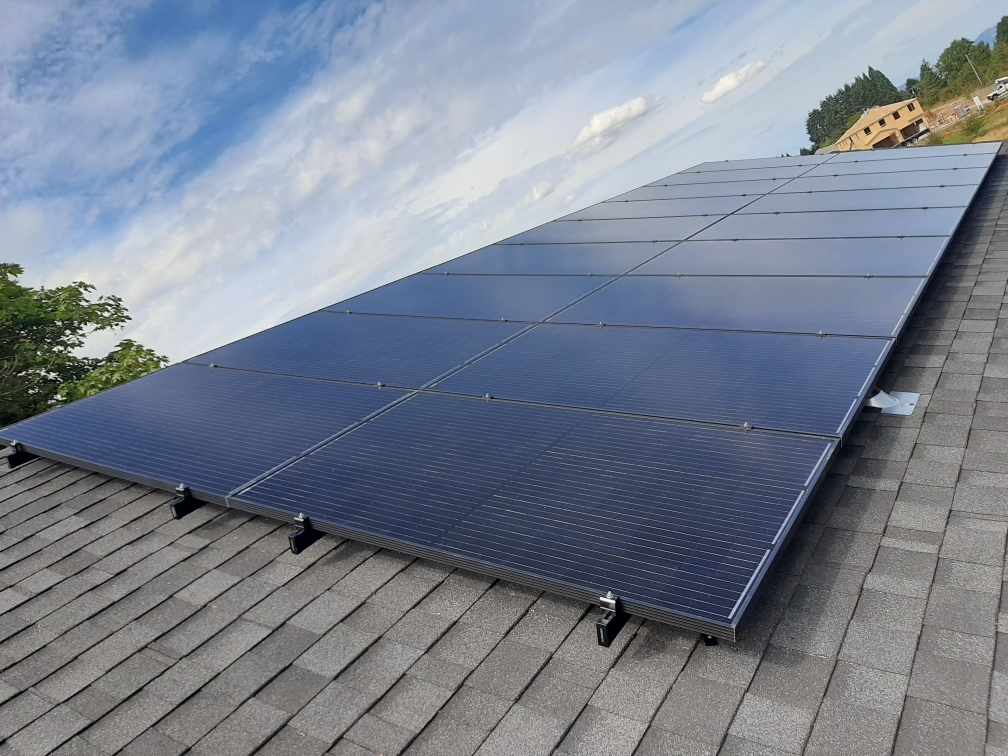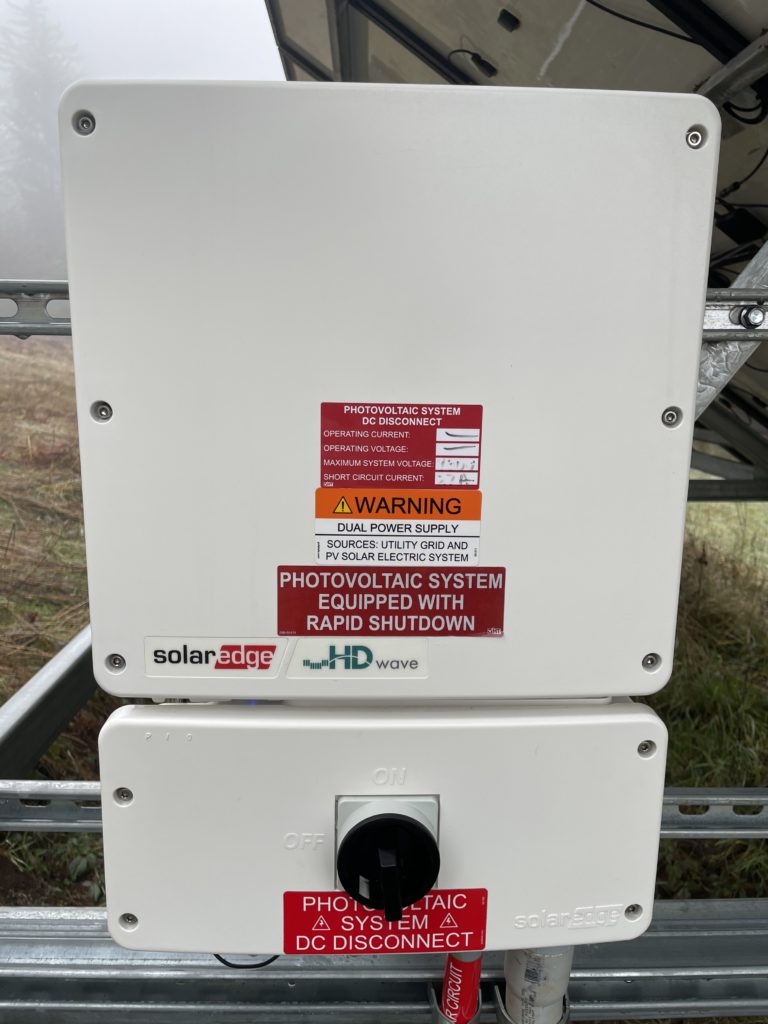The purpose of this article is to explain one of fastest growing and most common ways people are going solar. Residential, grid tied, net metered systems where a solar company does all of the work for you. This sets you up to own your power generation system. Without getting too deep into the details, residential solar is easy to wrap your head around. It does help to have an energy advisor go through everything with you, (book here) but for a brief introduction, here is how it works. It’s going to start with the sun shining, panels producing power to your home, sending excess energy to the grid, and back as needed. There, solar made simple, now let’s dive a bit deeper.
The Technology Made Simple
Solar panels collect energy from the sun! Each panel is a module made up of smaller solar cells. These cells have a positive and negative layer. When they are hit by photons (light) they create a circuit and channel the energy towards your home. This energy is direct current (DC) and will need to be inverted into alternating current (AC) for your home. This happens a bit further down the chain of technology, and will be covered in more depth later.
Solar panels are constructed in arrays on your roof, which are 2+ panels linked together. They are held down by a racking system that is bolted to your beams or trusses, and water sealed to prevent leaks. All the panels are grounded to the racking system with copper wire. Connected to the panels and racking are in most cases, either micro optimizers or micro inverters. Then every panel is connected by photovoltaic (PV) wire, and led to a junction box. This junction box consolidates the more expensive PV wire to more cost effective wire. It is then sent through conduit to the equipment wall, which is your central command station to your system.

The Equipment Wall
The first piece of equipment is your inverter where the DC is switched to AC, as mentioned above, and you can use it for your home! It is then wired to a disconnect switch, in case lineman need to work on the surrounding areas. Then the AC power is connected to your new net meter, which counts how much energy you are producing and using by spinning both forward and backward! From here, the system is connected directly to your breaker box, which connects you to the grid. Any of the excess power you produce is sent back to the power company and you receive a credit for it! The credited power can be used at night, or to pay for your next month of energy needs, depending on your system.

As far as the entire system goes, there you have it: panels collect light, inverters make it usable, net meters count where it goes, and you get power or a credit for future power. If you’re interested in learning how solar can work for your specific energy needs, book here to get a custom evaluation from one of our specialists.
Disclaimer: We have seen equipment walls in slightly different configurations and orders, as well as having both a production meter and net meter. Many of these differences are by state and county as well as custom needs of your system.
How Does Grid Tied Solar Work? What is Net Metering?
Grid tied and net metering are closely related. With a grid tied system, you are still connected to your local power company. You become a generator of electricity and they monitor how much you produce. There are pros and cons to being grid tied but as far as a return on investment and financial sense, grid tied is the way to go.
Pros
- The power company is essentially an unlimited battery and will credit as much as you over produce. In home solar batteries are costly and have their capacities.
- In the case you don’t produce as much as you need you can still pull from the grid.
Cons
- If the power goes out, you are still technically able to produce power with your panels however, the power company will need to shut off your connection to the grid so that you don’t back feed workers trying to fix a down power line for example.
Net Metering Made Simple
Solar companies and the people who help create a system design for your home, like myself, think about production in annual kWhs needed and created. This works the best for net metering programs that are at a 1-1 ratio. Every excess watt you produce, the grid gives you a watt back. Some companies even pay for excess at the end of the year, some don’t. Almost every person in every state with a good roof will have a time of year where they produce more energy with their panels than they consume. This is usually the summer for many people. When winter comes, you will have created a surplus of energy that the grid has tracked and will give to you at no extra charge when you need it.
This makes it so people can effectively produce all the power they need and the only money they give to the utility company is the connection fee or base rate or charge to be grid tied. For more information on Net Metering, check out https://www.seia.org/initiatives/net-metering
Battery integrated systems give you the ability to never lose power. in most cases, even if you have a battery, you will need to still remain connected to the grid. in order to be “off grid” you will need a lot of batteries and you will not be paid back by the grid. Net metering is helpful, because in many circumstances you won’t produce as much energy in the winter as the summer. Net metering allows you to gain enough energy credit from the summer to offset your winter usage. Off grid systems need a lot of storage capacity to match the ability of net metering. We hope to see updates to battery technology soon and we hear whispers in the industry that there are improvements on the way. The best way to take advantage of solar now, is to get a system that is battery compatible, while taking advantage of the current net metering benefits. View more about who we are and what we do at https://www.sustainablesolutionsadvisors.com/
